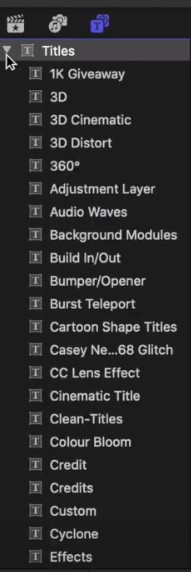
At HD and 2k, you should always aim for 3 pixels per frame (ppf). With everything mathematically perfect, every tiny imperfection shows up in stark relief.ġ. Scrolling titles contain none of those small, organic imperfections that are inherent to natural human motion and photographic capture. But until Ang Lee has his way, we are stuck with this relatively low frame rate. What looks nice for a cinematic scene is not necessarily ideal for typography in motion. “Persistence of Vision” is a relative thing. Doug Trumbull discovered the same problem when creating star fields for 2001. Absent any motion blur-which we do not recommend-this can cause your eye to see each letter two or three at a time. This is as high-contrast as it gets, creating an after-image on your retina. Several factors are things are conspiring against us here: But at real time playback it seems to be bouncing along instead of flowing smoothly. Stepping through the video frame-by-frame, everything looks fine.
#Final cut pro titles pixelated movie
They won’t love you (or me) for saying this. But it will make your movie look better. But if that ship has sailed, you can still request that your post team insert a smooth, DCI-compliant, square-pixel render into your DCP authoring timelines. Third, avoid non-standard rasters in your DI workflow.

Make separate renders for separate deliverables instead of relying on a single “master” end titles render. Second, don’t re-size your end titles.


Changing those grey pixels frame-to-frame results in temporal aliasing. Sub-pixel motion is accomplished by subtly shifting the pattern of grey (actually, semi-transparent) pixels at the edges of each glyph. This means that the number of pixels your credits travel each frame is not a round integer like 3.00, but a decimal like 3.18752. Subpixel motion -> temporal aliasing -> jitter What causes it?


 0 kommentar(er)
0 kommentar(er)
